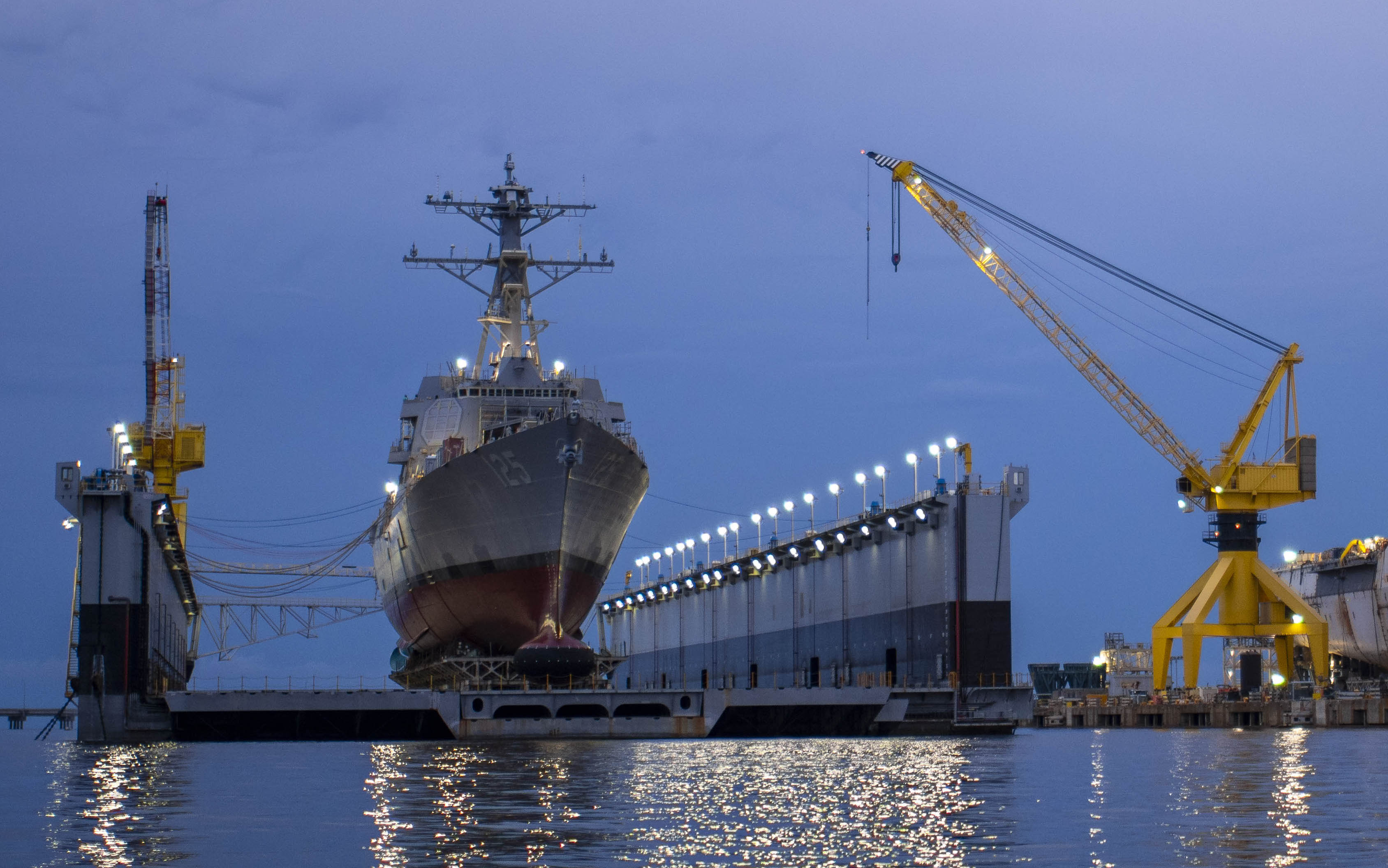
THE PENTAGON – The five-year guided-missile destroyer deal the Navy announced this week could grow to as many as 15 ships if Congress or the White House wants to add hulls to the deal, service officials said Thursday.
The multi-year procurement for the nine Arleigh Burke-class (DDG-51) destroyers includes six additional options to grow the buy. The deal, announced Tuesday, calls for HII’s Ingalls Shipbuilding to build six of the Flight III DDGs and General Dynamics Bath Iron Works to build three.
The nine-ship deal without the options calls for the Navy to issue Bath a hull in 2023, 2024 and 2026. HII will be awarded a ship in 2023, 2024, two in 2025, one in 2026 and one in 2027.
“That’s still an open competition, if you will, for each of those options as we go forward,” Jay Stefany, who is performing the duties of the assistant secretary of the Navy for research, development and acquisition (RDA), told USNI News Thursday.
“The contract allows the Navy to go back and ask the two industry teams to update their pricing at the same or lower level before we exercise the option.”
On Thursday, Stefany said the service did not intend to release the contract costs.
“Until we go through and debrief the companies and lay out those details, it is still source selection sensitive as we go forward, because those options are still in play to be either repriced and then evaluated,” he said.
Based on the latest cost estimate on the Flight III destroyers, each hull will cost about $2 billion, split evenly between the cost of government equipment provided to the yard and the construction of the ship’s hull, electrical and mechanical systems.
In 2018, the Navy awarded a similar split contract, with Ingalls awarded $5.1 billion for six Burkes and BIW $3.9 billion for four. Divided evenly, Ingalls built their ships for $850 million a hull and BIW for $975 million a hull.
Over the last three multi-year deals in which the Navy revealed the totals for the hulls, Ingalls has built ships for a lower price than BIW, USNI News has reported.
As part of the current deal, the Navy evaluated the capacity of the yards as part of the evaluations.
“We did look at where the industry teams were at with regards to their workload and their throughput and their capacity and our estimates going forward. That played a role in determining the quantities that we used for the floor and the phasing for what we asked for in pricing,” Program Executive Office for ships Rear Adm. Tom Anderson told reporters on Thursday.
The difference between the Ingalls and BIW hull totals are in part due to Bath’s ongoing delays in delivering destroyers currently under contract, USNI News reported on Tuesday.
The Navy did not elaborate on how many of Flight III ships it plans to buy ahead of transitioning to the planned next-generation guided-missile destroyer DDG(X).
“[The deal] sets the environment for a healthy competitive effort going forward on the DDG(X),” Stefany said on Wednesday.
Bath laid the keel for its first Flight III, Louis H. Wilson (DDG-126), in June. The Maine yard is working on destroyers Harvey C. Barnum Jr. (DDG-124), John Basilone (DDG-122), Patrick Gallagher (DDG-127), Quentin Walsh (DDG-132) and William Charette (DDG-130), USNI News previously reported.
Ingalls is currently building four Flight III destroyers at its yard in Pascagoula: Ted Stevens (DDG-128), Jeremiah Denton (DDG-129), George M. Neal (DDG-131) and Sam Nunn (DDG-133).





